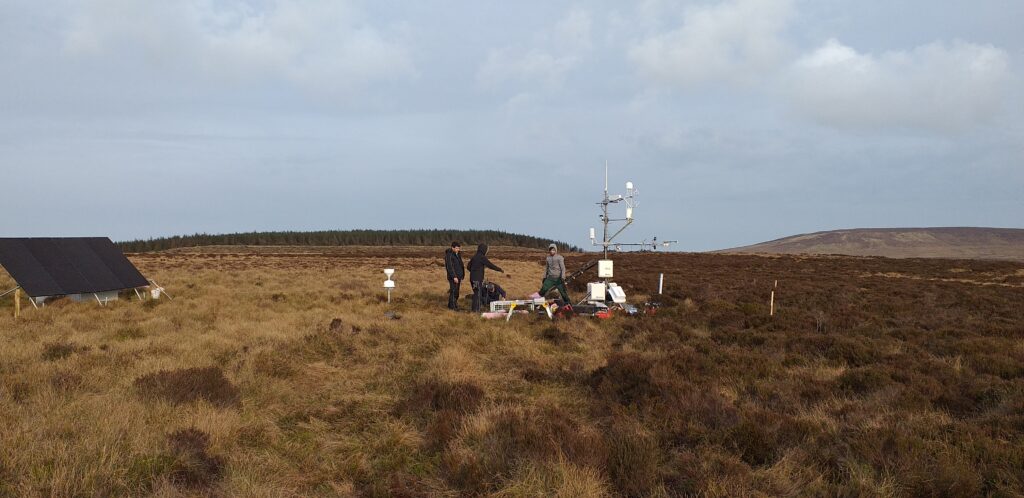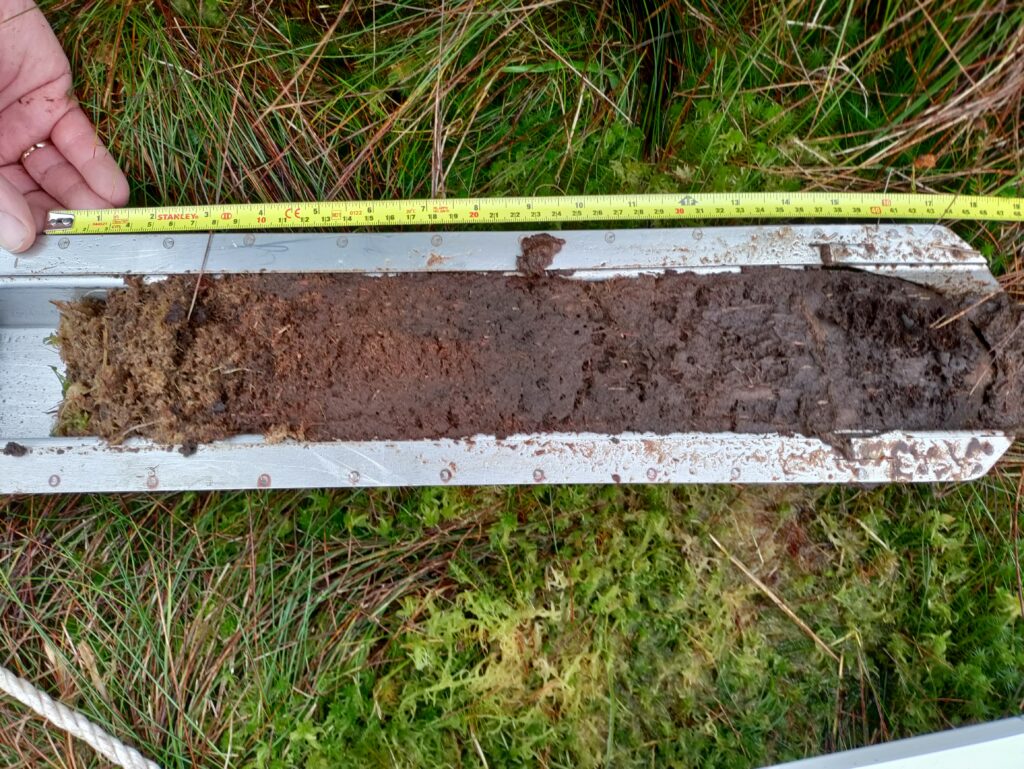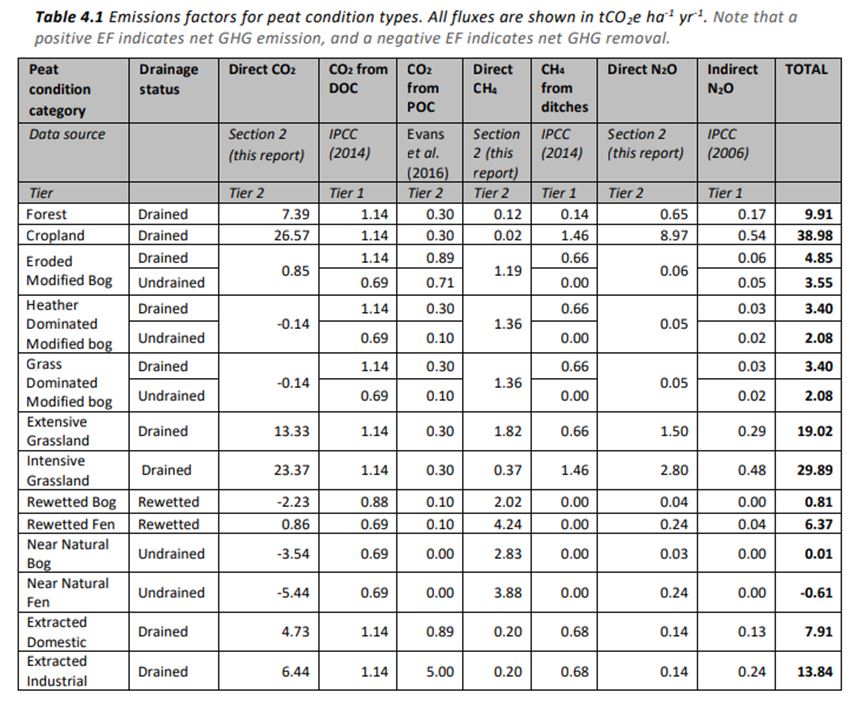Peatlands Greenhouse Gas Data on CAFRE Hill Farm
In March 2022, DAERA funded the UK Centre for Ecology and Hydrology to install a flux tower on Creeve moor at the CAFRE Hill Farm. This long term project will provide daily, monthly and annual data on the Carbon flux of the moorland measuring gaseous carbon emissions and sequestration of CO2 and CH4.
Fluvial carbon losses in terms of DOC are being measured through the water quality project. Future projects will involve the full measurement of fluvial carbon losses including particulate organic carbon (POC) losses and the measurement of gaseous flux across a range of bog ecotopes, as there is a wide variation within the category of blanket bog. It is important to disentangle this variation and particularly in a Northern Ireland context as current emissions data are generalised.

Peatlands Carbon storage
Sphagnum moss is the peat builder. It holds 20 times its weight in water & doesn’t break down easily (1-3% biomass breakdown/annum v 30-40% for other plants). In wet anaerobic conditions its biomass makes peat (at approximately a rate of 1mm per year). It has no roots, is fed from rainfall and the only important bit for future growth is the growing point/tip.
Using a conservative bulk density estimate there is approximately 400 tons Carbon / metre depth of peat in 1 hectare. Because C is lost in so many forms various forms eg CH4, CO2, DOC, POC, most of the time it is described as CO2 equivalents.
The peat C storage at Cafre Hill Farm is approximately 1 – 2 million t CO2 eq. This figure will become more accurate with future projects on bulk density and depth variation.
The store is at risk from habitat damage through drainage, overgrazing, wildfire & climate change which can lead to CO2 emissions rather than sequestration. Projects to make the bog more resilient include peatland re-wetting, wildfire prevention and grazing management.

Peatland Emissions
Peatland emissions are due to open drains installed in the 1960-80s. The area 30m on either side of any drain emits at a rate of between 2 – 3 tons CO2 eq/yr on open moor. When the peat dries out oxygen enters and recommences the breakdown of the peat organic matter, releasing CO2 as microbial respiration. The drains also lose Carbon in sediment (POC Particulate Organic Carbon, DOC Dissolved Organic Carbon, DIC Dissolved inorganic carbon).
From the data in the UK Peatlands Code and the IUCN UK Peatland Emissions Inventory the CAFRE Hill Farm emits approximately 3000 tons of CO2 eq per annum. Compared to the 1 – 2 million store it represents 0.003 – 0.0015 % per annum of a loss. However if we return it to good quality bog habitat in Peatland Accumulating Condition (PAC) where the habitat is 50-60% sphagnum moss coverage, the 3000 ton annual loss would be changed to a 1000 – 3000 ton gain. (Vegetation assessment comes to more than 100%, often 130-140% with sedges & heathers growing through & above the sphagnum)
The hill farm could become net zero within 20 years if all the peatland was returned to PAC with peatland and grassland sequestration then compensating for existing livestock emissions.

Reference
Implementation of an Emissions Inventory for UK Peatlands (defra.gov.uk)
